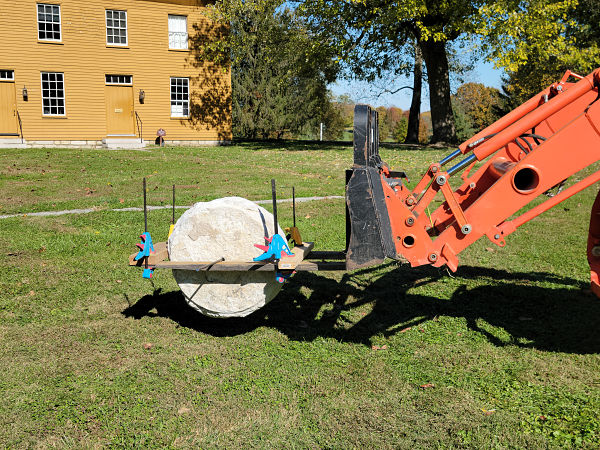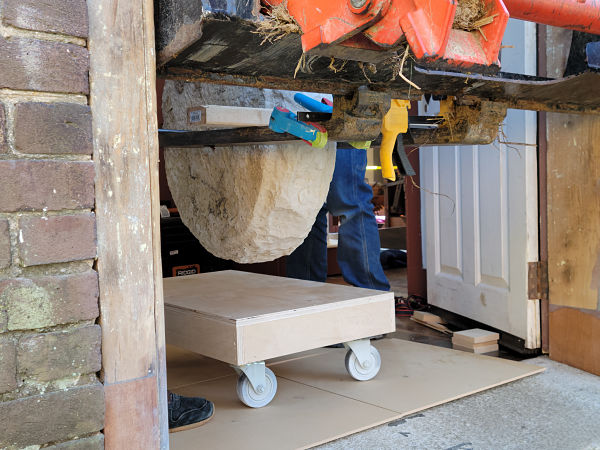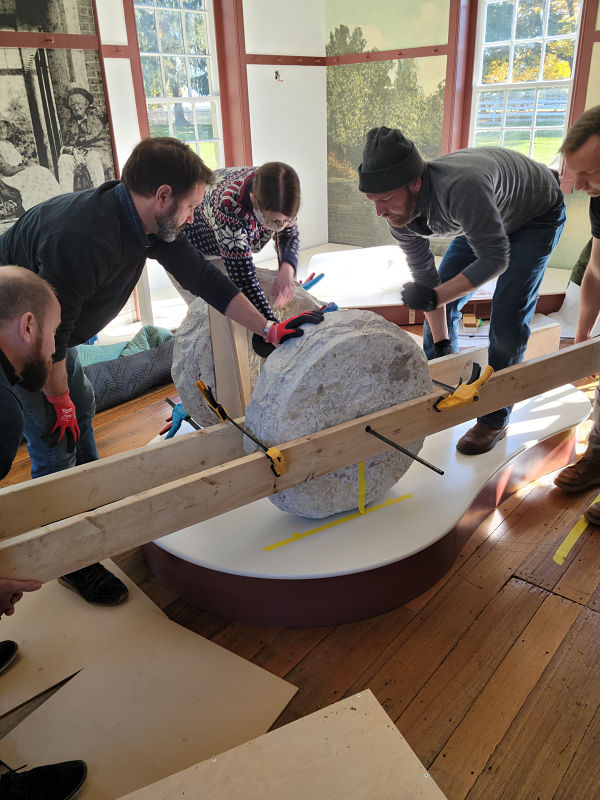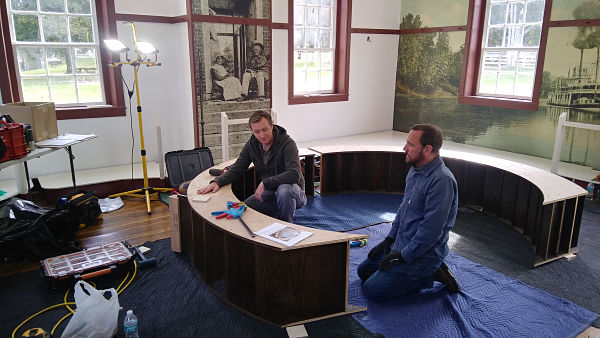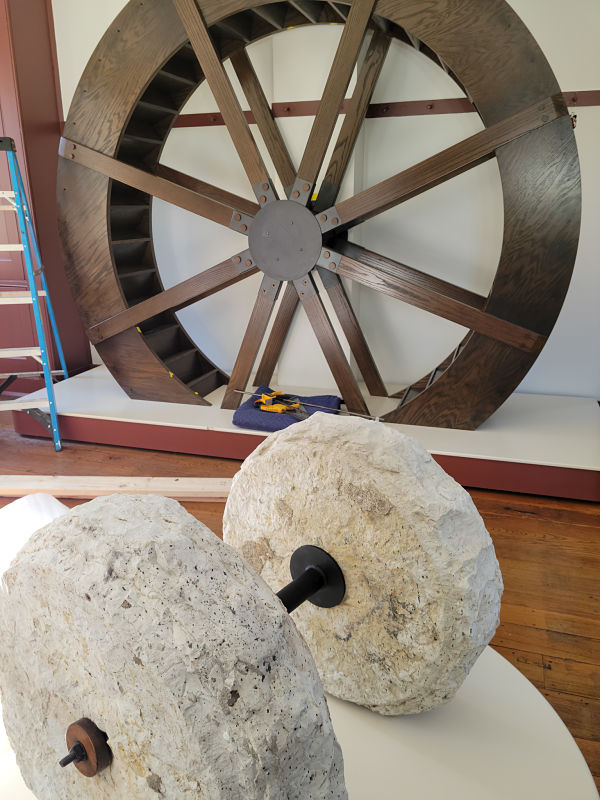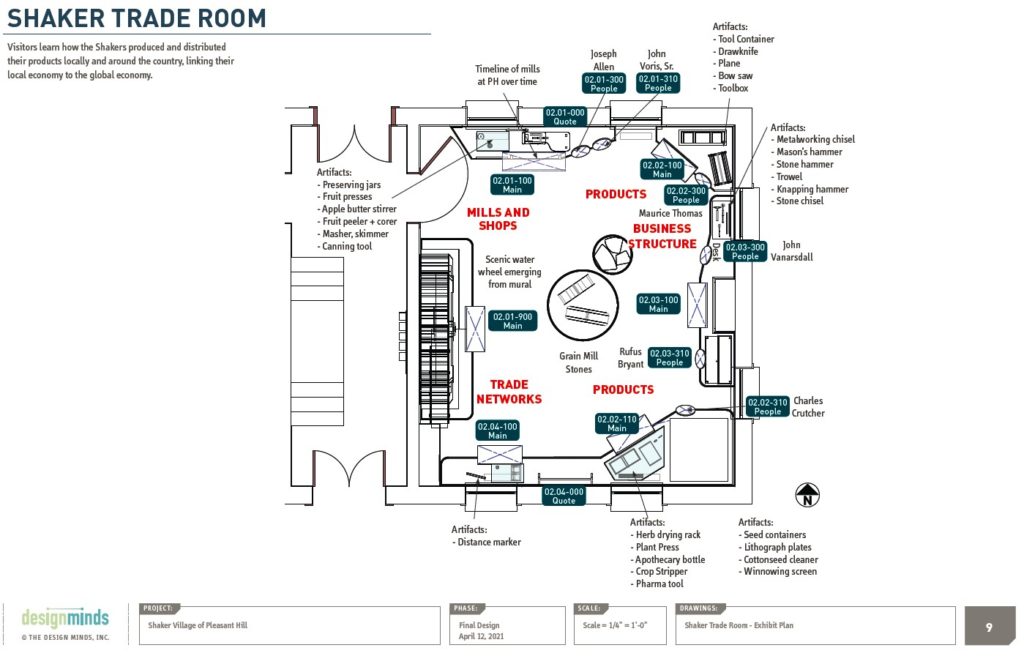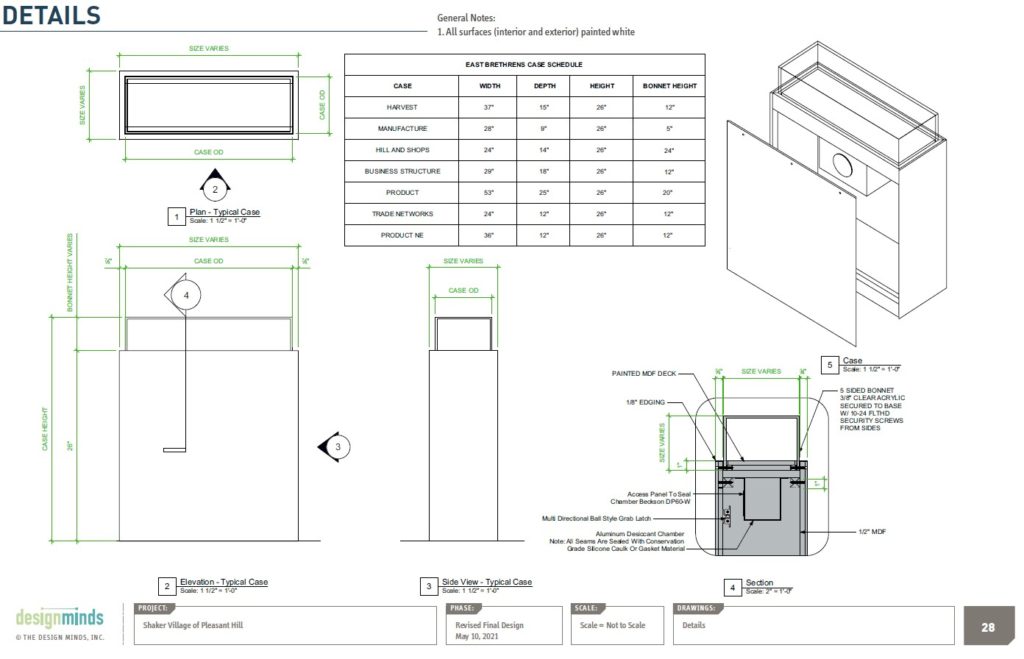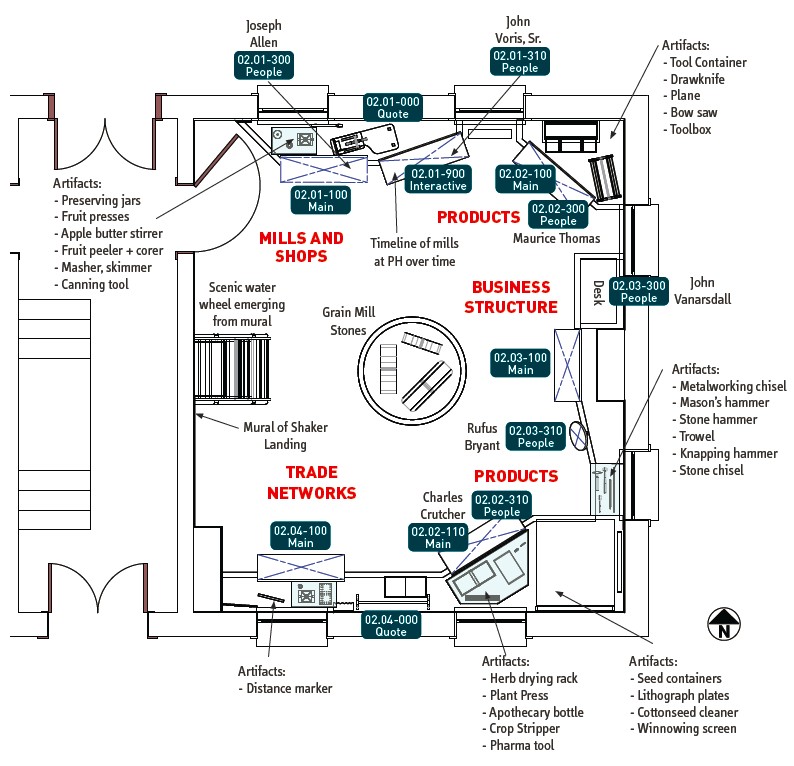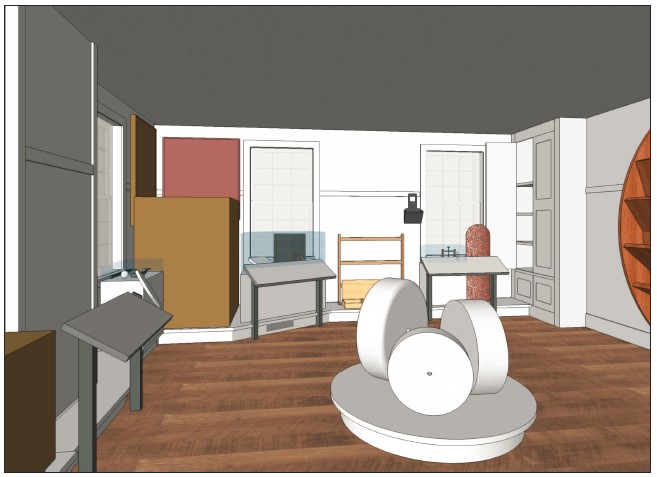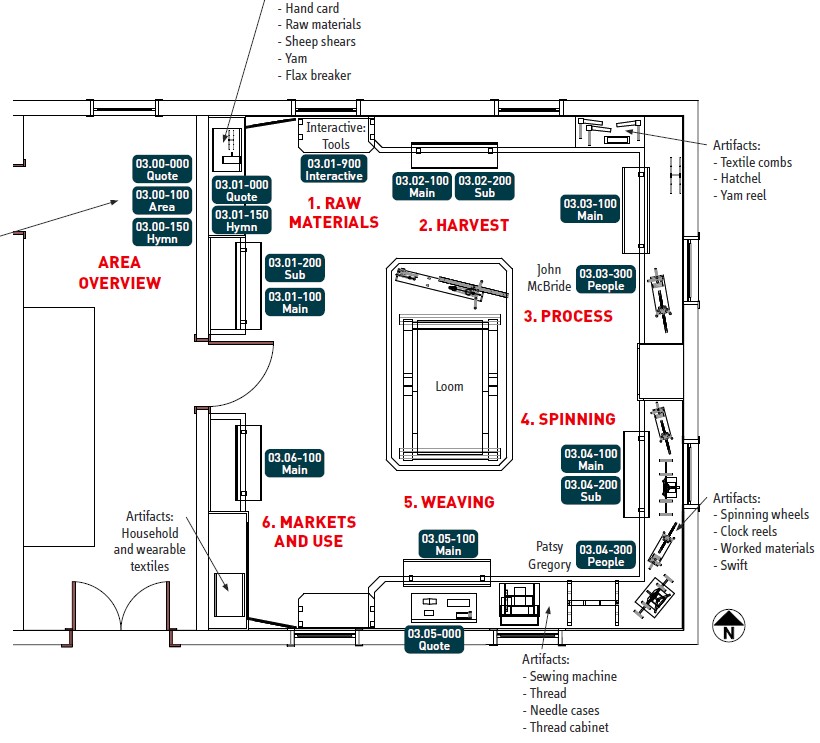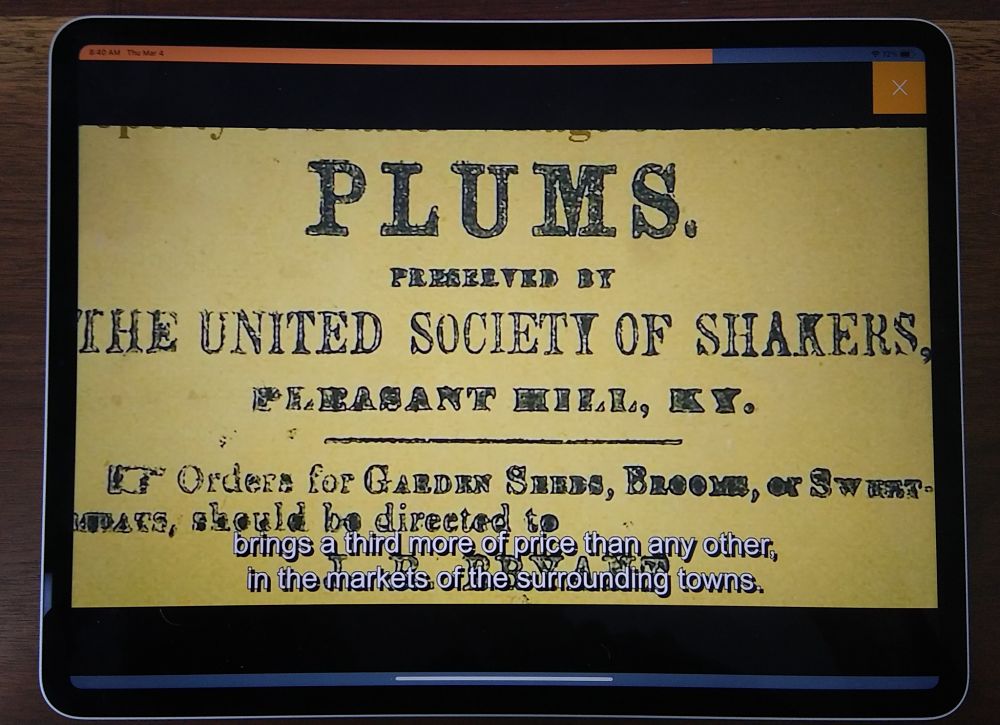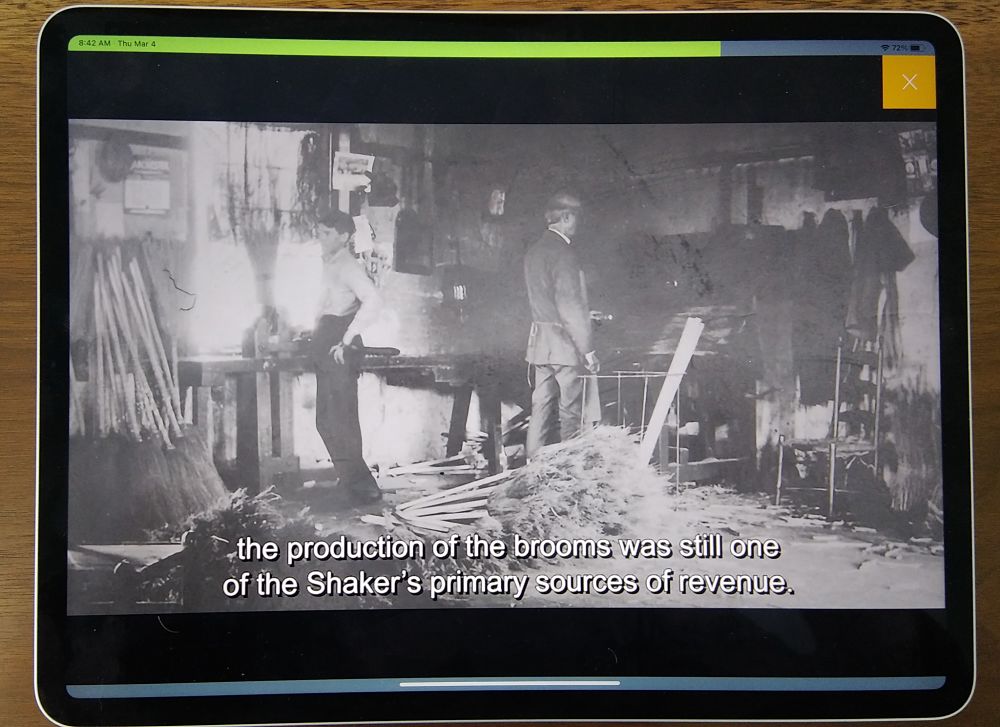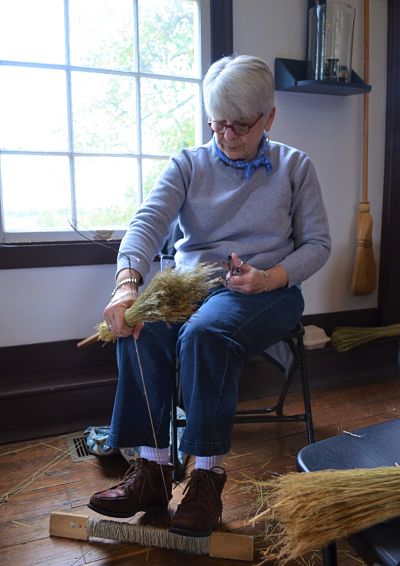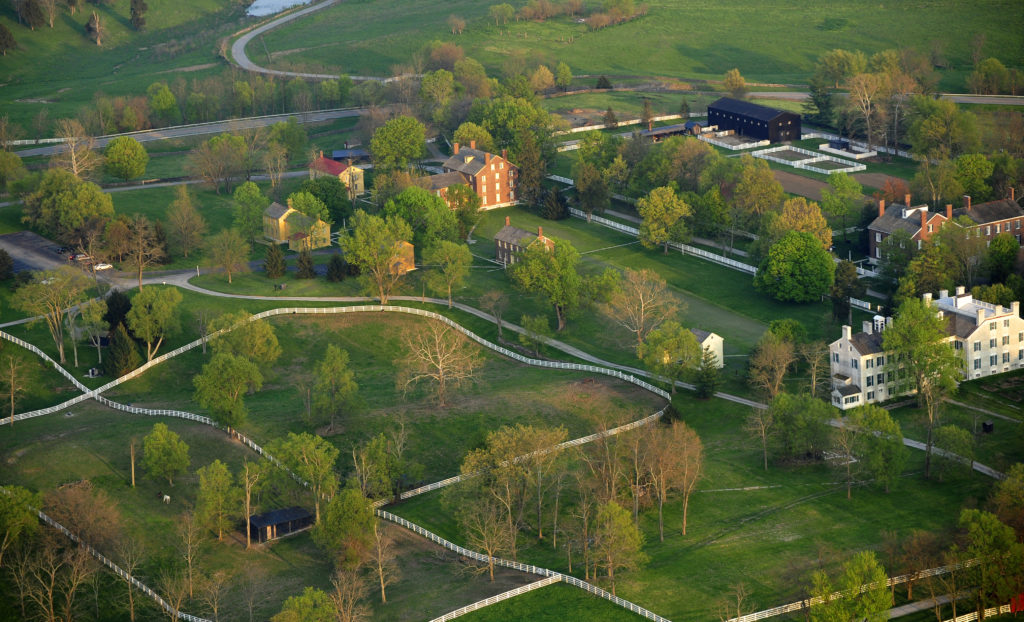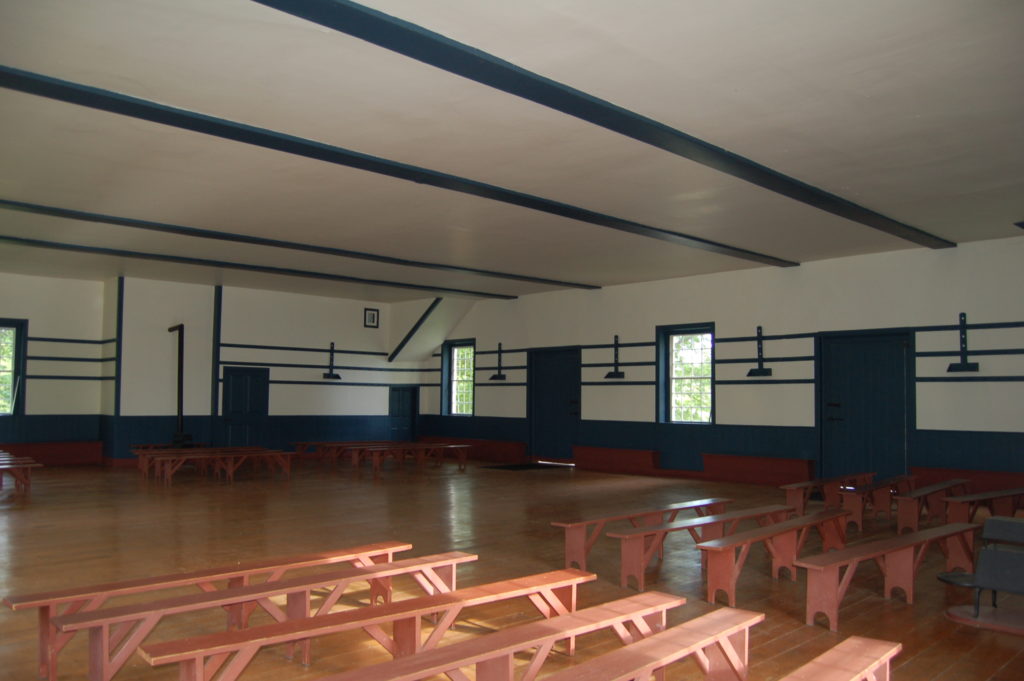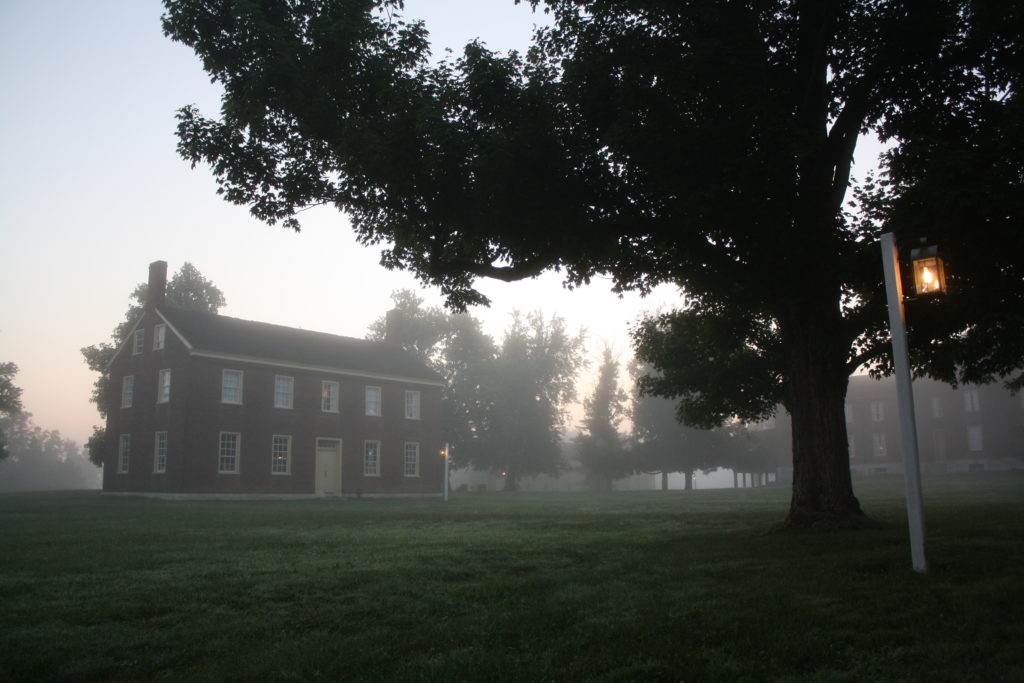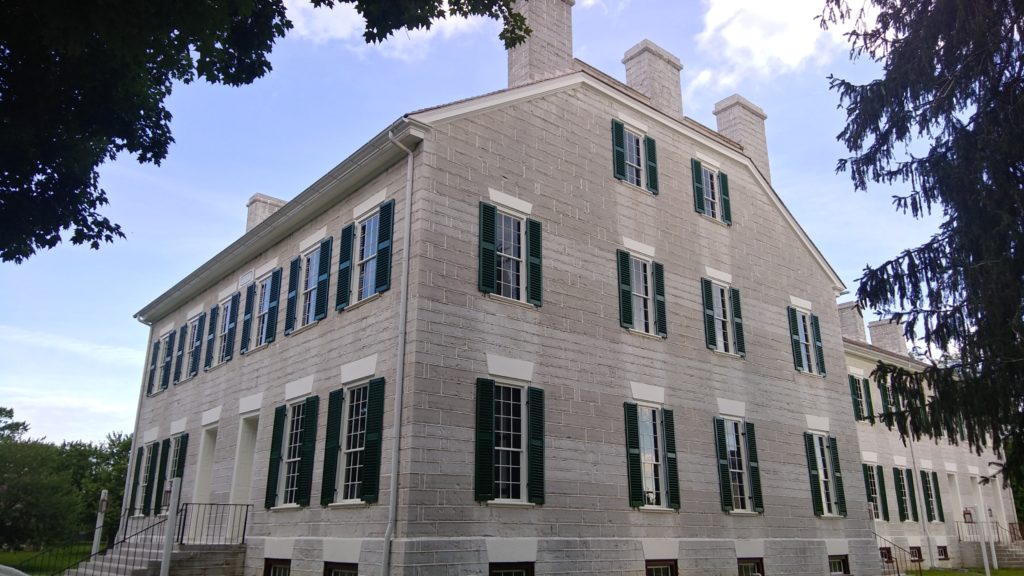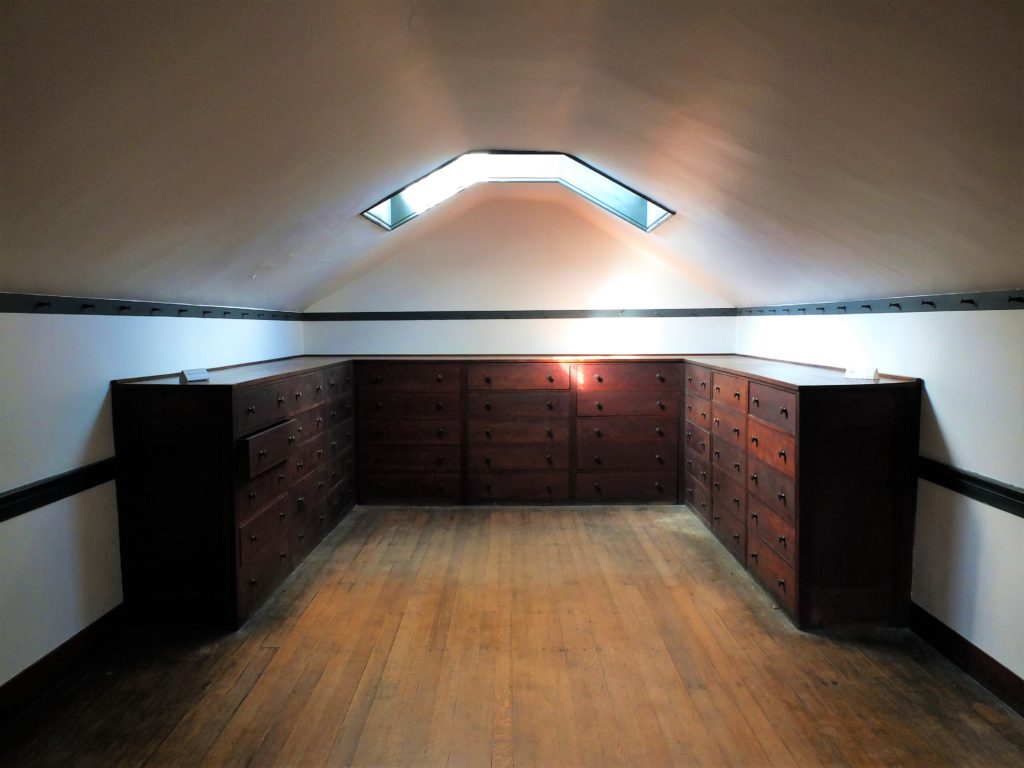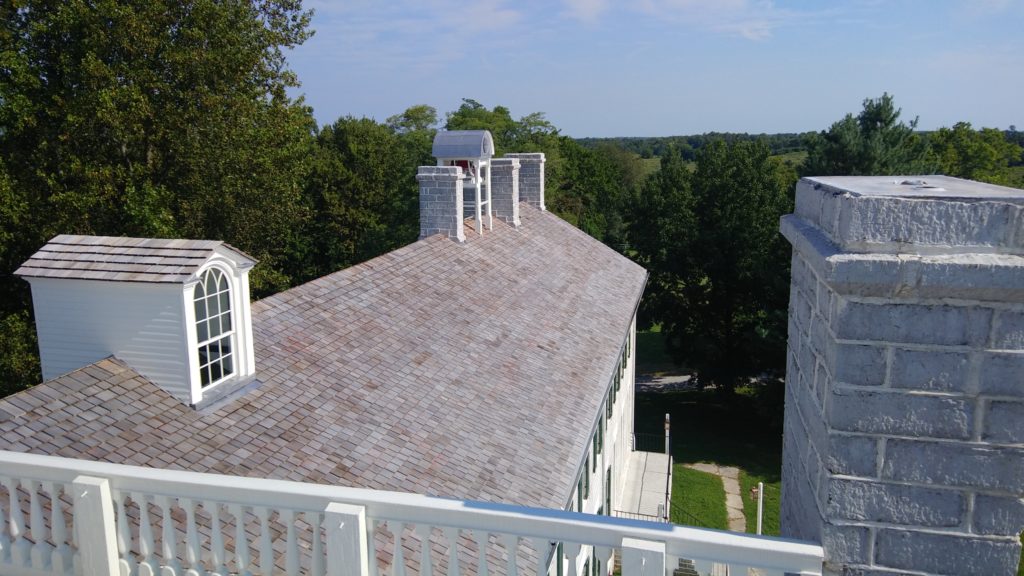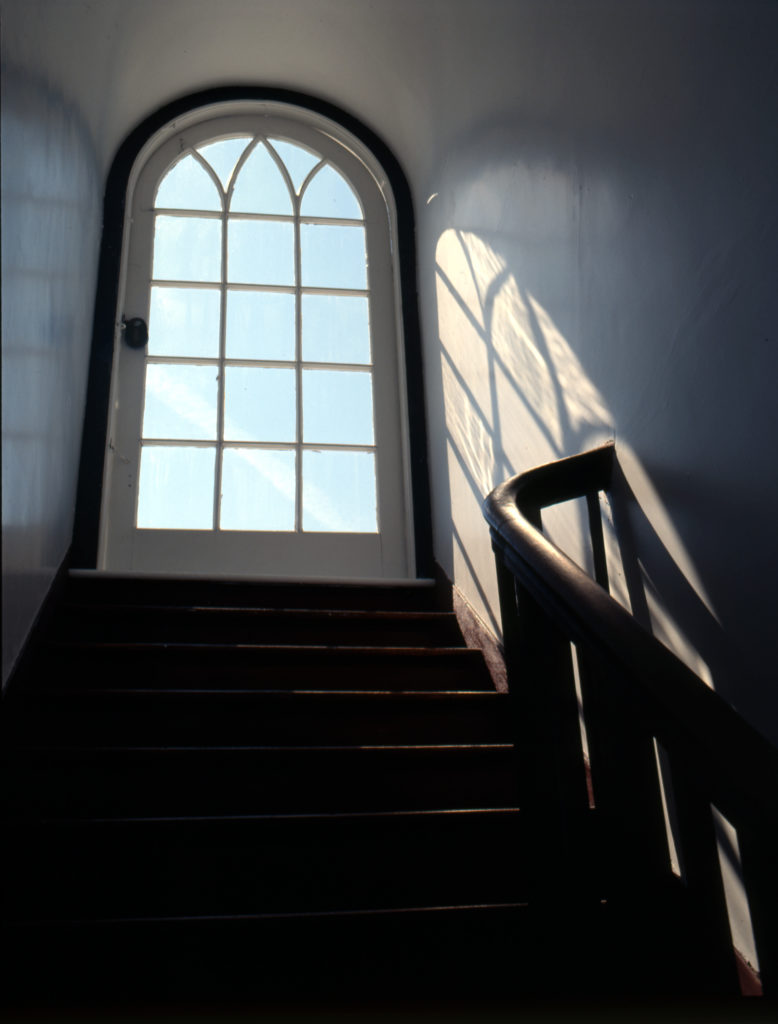Billy Rankin, VP of Public Programming and Marketing
This is the sixth part of a behind-the-scenes look at the development of Local Economies, Global Impacts, a new exhibition that will open this December at Shaker Village.
In previous posts we introduced three main goals that the team at Shaker Village keep in mind when developing any new exhibit:
We also looked into the process of fabricating an exhibit.
It’s now crunch time, as we are in the process of installing each component that will make the final exhibit experience!
Placing the Pieces
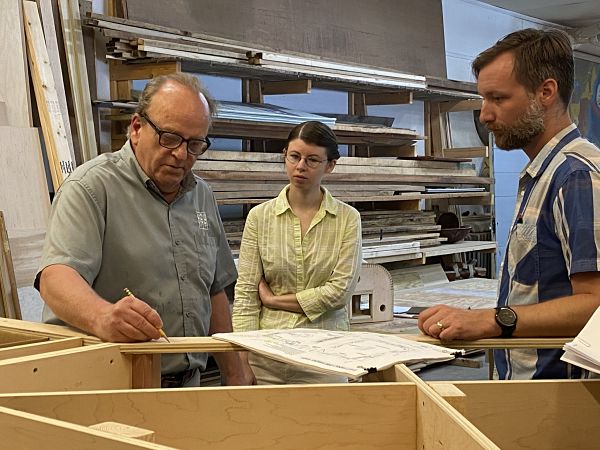
Over the last year and a half we have conducted research, written content, selected artifacts, compiled images, designed graphics, chosen contractors, built components and finally, FINALLY, we are putting it all together.
This is where the rubber meets the road, so to speak.
Are the stands we built here at the Village going to fit the acrylic covers manufactured offsite? Will every artifact fit correctly on the platforms designed for them? Did we double-check that each component can actually fit through the doors? How heavy are those millstones, exactly?
With a planned opening on December 10, we are in that timeframe where we bite our fingernails, hoping that all of our planning has paid off.
It’s not always smooth.
For instance, as murals were being installed on the walls it became obvious there were several locations where we hadn’t accounted for the full height of the wall mounted lighting units. These will need to be modified so we don’t have a wooden frame obscuring an important quote. Fortunately, we have a talented team onsite that will make adjustments that, once completed, will never be noticed.
How Heavy Are They?
For an exhibit that aims to demonstrate the one-time enormity of Shaker industry at Pleasant Hill, you need BIG artifacts to help tell the story. Enter two, unfinished 500+ pound millstones from our collection. Once again the problem-solving skills of our exhibit team and partners were put to the test. How do you move these two behemoths into the East Family Brethren’s Shop? Once there, how do you display them?
Fortunately, with a combination of great planning, a well-built platform and a little help from the Village’s tractor, we were able to safely mount these two stones. Let’s hope this exhibit stays in place for a while!
Water at Work
Another interesting feature of Local Economies, Global Impacts will be our model waterwheel. This 9 ft. diameter wheel will demonstrate how the Shakers powered many of the mills constructed at Pleasant Hill. Maps, cutaway images and audio/video components will add greater depth to the history of mills at the Village.
During our planning stages we looked at a number of different designs for the waterwheel. No mills remain standing at Pleasant Hill, so we found inspiration from archival images of the 1816 Grist Mill. The locations of bolts, spokes and other features were designed to mimic what the Shakers had built long ago along Shawnee Run.
Every End is a New Beginning
The installation of Local Economies, Global Impacts marks the beginning of a new phase of museum exhibitions at Shaker Village. These fully-realized exhibits will be a model for the museum experiences we will construct in buildings across the property. Combined with tours, workshops and other learning experiences, immersive exhibits will tell the story of the Pleasant Hill Shakers to our guests in a new and exciting way.
Be on the lookout for upcoming announcements about the opening of this new experience! We look forward to new generations of guests experiencing the legacy of the Kentucky Shakers.
Next Month: We’ll discuss the grand opening of this new exhibit, and how we evaluate the impact of the experience on our visitors.
Local Economies, Global Impacts is funded in part through a Museums for America matching grant, administered by the Institute for Museum and Library Services.
